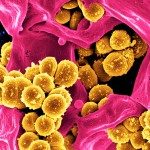Link to Pubmed [PMID] – 19729516
FASEB J. 2010 Jan;24(1):119-27
Increasing biochemical and genetic evidence indicates that the amyloid-beta (Abeta) peptide derived from amyloid precursor protein (APP) plays a central role in Alzheimer’s disease (AD) pathogenesis. We previously reported that RanBP9 promotes Abeta generation by scaffolding APP/BACE1/LRP complexes together. Interestingly, the RanBP9-Delta1/N60 (residues 1-392) deletion mutant interacted much more strongly with APP/BACE1/LRP than full-length RanBP9. In this study, we found that RanBP9-N60, a processed form of RanBP9 virtually identical to the RanBP9-Delta1/N60 mutant, was strongly increased in AD brains compared with controls. To evaluate the potential pathogenic consequences of this phenotype, we studied the differential biological properties of full-length RanBP9 vs. RanBP9-Delta1/N60 in HEK293T and Neuro-2A cells. The RanBP9-Delta1/N60 fragment, which lacks a nuclear localization signal, displayed enhanced cytoplasmic vs. nuclear localization and >3-fold enhanced stability than full-length RanBP9. Importantly, RanBP9-Delta1/N60, which contains the LisH dimerization domain, retained the capacity to form self-interacting multimeric complexes and increased Abeta generation by approximately 5-fold over vector controls, more potent than the approximately 3-fold increase seen by full-length RanBP9. Taken together, these data indicate that RanBP9-N60 may further drive the amyloid cascade in AD and that the proteolytic processing of RanBP9 may be an attractive therapeutic target.
